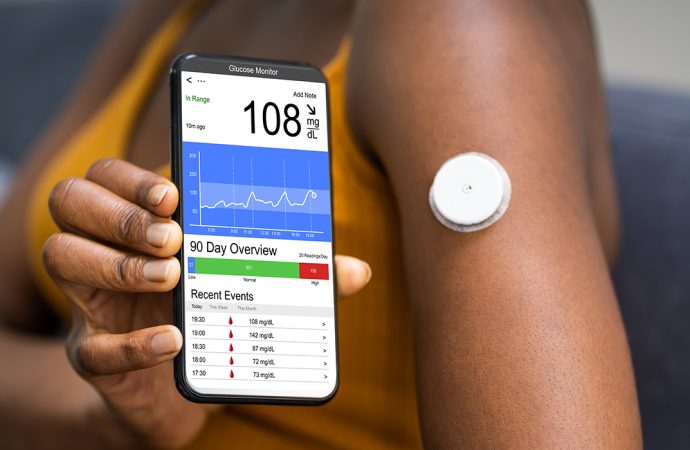Introduction According to the latest analysis by Renub Research, the Global Continuous Glucose Monitoring (CGM) Market, valued at USD 6.82 billion in 2024, is projected to grow steadily to USD 14.1 billion by 2033, expanding at a CAGR of 8.41% between 2024 and 2033. This robust growth is attributed to the rising global burden of
Introduction
According to the latest analysis by Renub Research, the Global Continuous Glucose Monitoring (CGM) Market, valued at USD 6.82 billion in 2024, is projected to grow steadily to USD 14.1 billion by 2033, expanding at a CAGR of 8.41% between 2024 and 2033. This robust growth is attributed to the rising global burden of diabetes, continuous innovations in glucose monitoring systems, and an increased focus on effective and proactive diabetes management.
Request sample Report: https://www.renub.com/request-sample-page.php?gturl=global-cgm-market-users-reimbursement-policy-continuous-glucose-monitoring-p.php
Rising Diabetes Prevalence: A Major Growth Driver
The prevalence of diabetes has reached alarming levels worldwide. According to the International Diabetes Federation (IDF), over 500 million adults are currently living with diabetes, and this number is projected to exceed 640 million by 2030. This rapid increase in cases, fueled by sedentary lifestyles, poor dietary habits, and genetic predisposition, has created an urgent demand for advanced glucose monitoring solutions.
CGM systems have emerged as a game-changer in diabetes management, offering real-time, continuous glucose data that empowers patients to make informed lifestyle and medication decisions. Unlike traditional finger-prick methods, CGM technology provides a comprehensive glucose profile, helping to detect fluctuations and patterns that would otherwise go unnoticed.
Technological Advancements Transforming CGM Devices
The CGM industry is experiencing a technological revolution. Modern systems now offer:
- Minimally invasive sensors that can be worn comfortably for extended periods.
- Bluetooth and smartphone integration for real-time monitoring and data sharing with healthcare providers.
- Artificial Intelligence (AI)-driven analytics to predict glucose trends and prevent hypo/hyperglycemic episodes.
- Closed-loop insulin delivery systems that automate insulin administration based on sensor readings.
Leading manufacturers are also focusing on smaller, more accurate, and longer-lasting sensors to improve patient comfort and compliance. These innovations are not only enhancing the quality of care but also driving adoption rates worldwide.
Increasing Awareness and Adoption of Preventive Healthcare
A growing global focus on preventive healthcare is accelerating CGM adoption beyond type 1 and type 2 diabetes patients. People with prediabetes, gestational diabetes, and metabolic disorders are increasingly using CGM devices to monitor their glucose levels proactively.
Healthcare providers are recommending CGM systems to high-risk individuals to prevent disease progression and reduce complications. This shift towards early detection and prevention is a significant factor contributing to market expansion.
Supportive Reimbursement Policies Boosting Market Growth
Many countries are introducing favorable reimbursement frameworks for CGM devices to reduce out-of-pocket expenses for patients. In developed markets such as the United States, Canada, Germany, and Japan, insurance providers are increasingly covering CGM systems for eligible patients, including those with type 2 diabetes on intensive insulin therapy.
Government-backed healthcare systems are recognizing CGM as a cost-effective intervention that reduces hospitalizations and long-term diabetes-related complications, thus lowering the overall economic burden.
Regional Insights
- North America: Dominates the global CGM market due to high diabetes prevalence, strong insurance coverage, and rapid adoption of advanced healthcare technologies.
- Europe: Growth driven by aging populations, increasing healthcare expenditure, and government-led diabetes prevention programs.
- Asia-Pacific: Fastest-growing region, fueled by rising diabetes rates in China, India, and Southeast Asia, along with expanding middle-class healthcare spending.
- Latin America & Middle East: Adoption is increasing due to rising awareness campaigns and gradual improvement in healthcare infrastructure.
Market Segmentation Overview

Image by: Yandex.com
1. By Component:
- Sensors
- Transmitters & Receivers
- Insulin Pumps (Integrated with CGM)
2. By End-User:
- Hospitals & Clinics
- Homecare Settings
- Diagnostic Centers
3. By Demographics:
- Adults
- Children & Adolescents
Key Market Growth Drivers
- Rising Global Diabetes Cases: Increasing patient base creates a sustained demand for CGM devices.
- Technological Innovations: AI integration, wireless connectivity, and advanced sensors enhance patient experience.
- Favorable Reimbursement Policies: Encourages wider adoption among patients and healthcare providers.
- Shift Towards Preventive Healthcare: Early monitoring to avoid complications.
- Integration with Wearables: Seamless health monitoring alongside other vital metrics.
Industry Challenges
- High Device Costs: Despite insurance coverage, affordability remains a challenge in low-income regions.
- Need for Patient Education: Proper device usage and data interpretation are crucial for effective management.
- Regulatory Compliance: Strict approval processes can slow product launches.
Future Outlook
The CGM market is poised for strong and sustained growth. By 2033, CGM systems are expected to become a mainstay in diabetes care, aided by innovations like non-invasive glucose monitoring, improved sensor accuracy, and AI-driven predictive algorithms. Additionally, integration with digital health ecosystems will enhance personalized treatment and preventive care strategies.
New Publish Report:
- Global Protein Production by Poultry & Protein Price, United States, Mexico, Brazil and EU Chicken Production, Export and Consumption
- Global Pork Production (US, Mexico, Brazil, Europe, China, ASEAN-5), Protein Production by Pork, US Per Capita Pork Protein Consumption
- Global Pork Meat Market Size and Share Analysis – Growth Trends and Forecast Report 2025-2033
About the Company
Renub Research is a Market Research and Consulting Company with more than 15 years of experience, especially in international Business-to-Business Research, Surveys, and Consulting. We provide a wide range of business research solutions that help companies make better business decisions. We partner with clients across all sectors and regions to identify their highest-value opportunities, address their most critical challenges, and transform their businesses.
Our wide clientele includes key players in Healthcare, Travel & Tourism, Food & Beverages, Power & Energy, Information Technology, Telecom & Internet, Chemicals, Logistics & Automotive, Consumer Goods & Retail, Building & Construction, and Agriculture. Our core team comprises experienced professionals with graduate, postgraduate, and Ph.D. qualifications in Finance, Marketing, Human Resources, Bio-Technology, Medicine, Information Technology, Environmental Science, and more.
Media Contact:
- Company Name: Renub Research
- Contact Person: Rajat Gupta, Marketing Manager
- Phone No: +91-120-421-9822 (IND) | +1-478-202-3244 (USA)
- Email: rajat@renub.com
10 Frequently Asked Questions (FAQs)
Q1. What is the current market size of the global CGM market?
The market was valued at USD 6.82 billion in 2024.
Q2. What is the projected market size by 2033?
It is expected to reach USD 14.1 billion.
Q3. What is the forecast CAGR for the CGM market between 2024 and 2033?
The market is anticipated to grow at a CAGR of 8.41%.
Q4. What are the main drivers of CGM market growth?
Rising diabetes cases, technological advancements, and supportive reimbursement policies.
Q5. Which regions dominate the CGM market?
North America leads, followed by Europe and Asia-Pacific.
Q6. Who uses CGM systems?
Primarily people with type 1 and type 2 diabetes, but adoption is growing among prediabetic and gestational diabetes patients.
Q7. What technological features are improving CGM devices?
Wireless connectivity, AI analytics, predictive alerts, and longer sensor lifespans.
Q8. Are CGM systems covered by insurance?
Yes, in many developed countries, insurance coverage is expanding for eligible patients.
Q9. What are the challenges in CGM adoption?
High costs, need for patient education, and regulatory hurdles.
Q10. What is the future outlook for the CGM market?
Strong growth driven by innovation, preventive healthcare adoption, and integration with wearable health tech.
















